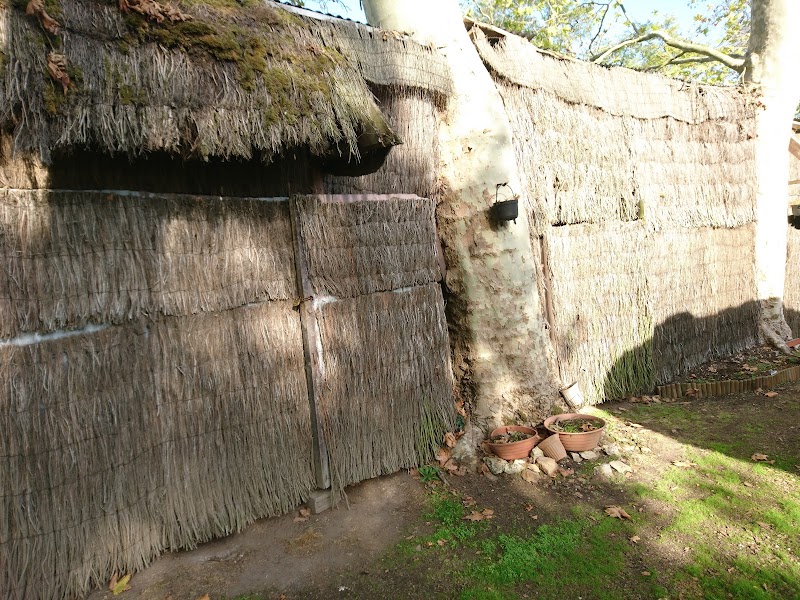
The Loire Days Hiking Experience in Saumur: Adventure Along France’s Wild Riverbanks
Experience the Loire Days hike in Saumur for a dynamic day along France’s wild Loire River. This moderate 20 km trail blends natural ruggedness with cultural history, offering panoramic views, forested paths, and a genuine river challenge perfect for hikers seeking both adventure and practicality.
Wear Grippy Hiking Footwear
The trail’s mix of gravel, mud, and slippery riverbanks demands solid shoes to maintain sure footing and avoid falls.
Start Early in the Day
Morning hikes help you avoid afternoon heat in summer and enjoy cooler temperatures along the routes shaded by forest.
Carry Sufficient Water
While fountains appear sporadically, bring at least 1.5 liters for the full hike to stay hydrated, especially on warmer days.
Prepare for Variable Terrain
Expect sudden elevation changes and uneven paths, so pace yourself and use trekking poles if stability is a concern.
The Loire Days Hiking Experience in Saumur: Adventure Along France’s Wild Riverbanks
The Loire Days, held in Saumur, France, offers a compelling escape into a landscape that is both untamed and accessible. The event celebrates the Loire River’s rugged beauty through hikes that track its challenging riverbanks, forests, and hilltops. The main trail stretches approximately 20 kilometers, with an elevation gain around 350 meters—enough to test stamina without overwhelming most avid hikers.
From the onset, hikers will feel the Loire River’s presence as it dares you forward, its currents murmuring stories of regional history and nature’s fierce persistence. The terrain varies: expect patches of shaded woodland where mossy oak trees stand watch, gravel riverbanks prone to slipperiness, and wide-open vistas overlooking Sologne’s green expanses. Keep alert for sudden climbs that arise like natural obstacles, rewarding you with panoramic views of Saumur and its chateau crowning the skyline.
Practical preparation is key. Good hiking shoes with solid grip will fend off the river’s tricky banks and occasional muddy sections. Hydrate thoroughly before and during the hike; while a few fountains punctuate the route, water bottles remain essential. Early morning departures are preferable to avoid afternoon heat, especially in summer when the sun presses heavily.
Seasonally, spring and fall offer mild temperatures and shifting colors—buds bursting open or leaves turning fiery—making those forest stretches feel alive and breathing with change. In summer, the river invites cool-down dips, though be ready for sun exposure on the open sections. Winter hikes bring a quiet stillness, the Loire's slower currents mirroring the pale sky, but require warm layers and vigilance against slick ground.
During your journey, take time to notice local wildlife: kingfishers flash by the river’s edge, while deer may pause briefly in forest clearings. Historical touches weave through the hike—ancient stone bridges and chateau ruins remind you of Saumur’s layered past.
For adventurers, the Loire Days hike is an engagement with a river landscape that is fiercely itself: unpredictable yet rewarding. It asks for respect, attention, and readiness. In return, it delivers a day of active immersion among shifting perspectives and steady natural force.
Whether you are a casual hiker or seasoned outdoor explorer, this trail offers manageable challenge combined with immersive beauty and cultural touchpoints. Prepare well, keep your pace steady, and let the Loire’s restless energy guide your way.
Nearby Trips
All Adventures
Boat Charters
Water Activities
Adventures near Saumur, France
Discover the unique and memorable adventures that make Saumur, France special.
Frequently Asked Questions
Are the trails well marked during the Loire Days event?
Yes, the Loire Days trails in Saumur are marked clearly with temporary signs and colored trail markers for the event duration. Outside of the event, some segments may require attention to local trail maps or GPS.
What wildlife might be spotted along the hike?
Keep an eye out for kingfishers and herons by the river, red deer in forested sections, and various butterflies in spring and summer. Early morning is best for wildlife spotting.
Is public transportation available to reach the trailheads?
Saumur has regular train connections and local buses. Several trail access points are reachable by bike or taxi from the town center, making transport planning manageable.
Can the hike be completed in sections or does it require a full-day commitment?
While often done as a full-day loop, sections of the trail can be completed independently for shorter hikes, allowing more flexibility depending on your schedule and energy.
Are there any historical sites directly accessible on the hike?
Yes, hikers pass near medieval bridges and remains of old river fortifications. Saumur’s famed chateau is visible from elevated viewpoints, adding cultural depth to the natural experience.
What environmental rules should hikers observe?
Respect local flora and fauna by sticking to marked trails, avoid littering, and refrain from disturbing nesting birds or wildlife. The Loire Valley is a protected natural area with active conservation efforts.
Recommended Gear
Hiking boots with good tread
Ensures stability and grip on mixed surfaces including gravel, mud, and slick riverbanks.
Water bottle (1.5L minimum)
Necessary to stay hydrated during the 4-5 hour hike, especially in warm weather.
Layered clothing
Allows you to adjust to temperature shifts, particularly in cooler and changeable seasons.
Trekking poles
Helpful for maintaining balance on uneven ground and during elevation changes.
Local Insights
Hidden Gems
- "Viewpoint at Rochemenier cliffs offers lesser-known panoramic views of the Loire bend."
- "Small fishing hamlets along the river where locals share stories about the Loire’s power and mood."
Wildlife
- "Eurasian otters are a secretive but possible sight near quieter river sections."
- "During migration seasons, look for groups of white storks nesting in the area."
History
"Saumur’s location on the Loire made it a strategic medieval crossing and trading point, with fortifications designed to control river traffic. The chateau overlooking the river was once a royal residence and military stronghold."
